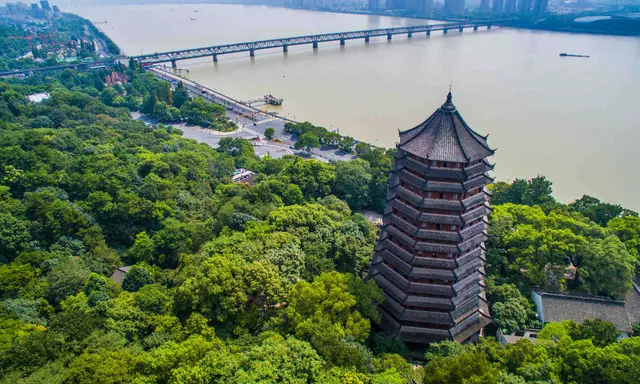The upcoming G20 summit will – for the first time – be hosted in China this September.
The annual forum for governments and central banks from the Group of Twenty major economies will this year take place in Hangzhou, the capital of eastern Zhejiang province.
“In heaven, paradise; on earth, Suzhou and Hangzhou”, goes an old Chinese saying. But is the city really as utopian as described?
We suss it out for you ahead of the talks.
Why is Hangzhou known as the city of leisure?
This goes back to 2006, when the city hosted the first World Leisure Expo. At the time, the World Leisure Organisation, the NGO that organised the expo, named Hangzhou the “Oriental leisure capital”. Since then, the city has promoted leisure tourism as a main driver of its economy, which relies largely on its service sector.
Last year, one in 13 mainlanders and some 3.4 million foreigners visited Hangzhou, according to official statistics.
Tens of thousands of tourists walk on a bridge at Hangzhou’s West Lake during China’s ‘Golden Week’ National Day holiday. Photo: Xinhua
Why isn’t Hangzhou a megacity?
Hangzhou’s metropolitan area is home to more than six million people, but it has less than five million permanent residents. In China, a city earns its “megacity” status when it has over 5 million permanent residents, according to a standard introduced by the State Council in 2014.
By this standard, Nanjing, capital of neighbouring Jiangsu province, is considered a megacity as its urban areas are home to some 6.6 million permanent residents.
But what difference does the “megacity” status make? The classification of a city often affects government policies that apply to it as well as the amount of real-estate investment it receives.
Clockwise from top left: West Lake carp in vinegar gravy, honey lotus root stuffed with glutinous rice, Beggar’s Chicken and Dong Po pork. Photo: SCMP
What’s the dining and art culture like in Hangzhou?
Hangzhou cuisine – a branch under one of China’s eight schools of food – is known for its freshness, sweetness and delicate preparation. Ingredients are typically sourced from the city’s main scenic spot, the West Lake.
Hangzhou’s signature dishes include honey lotus root stuffed with glutinous rice, West Lake carp in vinegar gravy, Dong Po pork and Beggar’s Chicken. Each dish usually has a story behind how it was made or how it got its name.
Beggar’s Chicken, for example, involves wrapping a whole chicken in mud and lotus leaves before roasting. The dish is said to have been developed based on beggars’ methods of cooking fowl they had stolen.
Farmers toil in a Longjing tea farm in Hangzhou. Photo: Xinhua
People in Hangzhou also like to drink tea, especially the locally grown Longjing tea. The drink is known for its green colour, delicate aroma and gentle, sweet taste.
In terms of art, Hangzhou has long been a favourite among China’s landscape painters, probably for its picturesque scenary. The city is also famous for its Chinese calligraphy and seal carvings, and is home to the country’s top art university, the China Academy of Art.
Photos taken on December 8, 2013, top, and April 2, 2013, show the West Lake on smoggy and clear days repectively. Photo: Xinhua
Is air pollution in the city really that bad?
Many were surprised when the 2015 documentary Under The Dome revealed that Hangzhou – purportedly China’s most beautiful city – saw more than 200 smoggy days a year.
Local media later confirmed that the city experienced around 238 smoggy days in 2013. Most of its air pollution came from automobile emissions, according to the reports.
But according to the city’s latest annual environment report, the number of smoggy days had since dropped to just over 120 days last year.
An aerial night shot of the city, which is among China’s most congested cities. Photo: Xinhua
What about the traffic?
Last year, Hangzhou came in fourth in a ranking of China’s most congested cities, according to a report from mapping platform Gaode.
It also experienced the longest traffic jams – more than six hours a day, totalling over 1,600 hours a year. This was worse than Beijing and Shanghai, which ranked first and seventh respectively among the country’s most congested cities.
The rankings weren’t news to the locals, though. In 2013, the local government said one in every three people in Hangzhou owned a car – the highest number among all other Chinese cities – resulting in its frequent traffic jams.
What’s the weather like?
Hangzhou is more humid compared with its neighbours Shanghai and Nanjing. It experiences extremely hot weather in summer and low temperatures in winter. In a typical year, it sees on average more than 30 days of high temperatures (over 35 degrees Celsius) and 15 days of heat waves (over 37 degrees), as well as more than 140 days of rain.
West Lake tourists after a passing shower in Hangzhou. It rains once every three days in Hangzhou. Photo: Xinhua
Other interesting facts about Hangzhou
President Xi Jinping once oversaw the area as provincial party chief of Zhejiang province from 2002 to 2007.
Among prominent officials in Hangzhou is also Cai Qi, the city’s former mayor from 2007 to 2010.
Cai was in 2014 promoted to deputy director of the state security committee chaired by Xi. He was Hangzhou’s first mayor in 20 years to be promoted to a ministerial-level position after leaving office.
Cai’s political career overlapped with Xi’s in both Fujian and Zhejiang provinces. Before his promotion, he was known for being active on weibo and had more than 10 million followering on the social networking platform.
(SCMP)
 简体中文
简体中文

